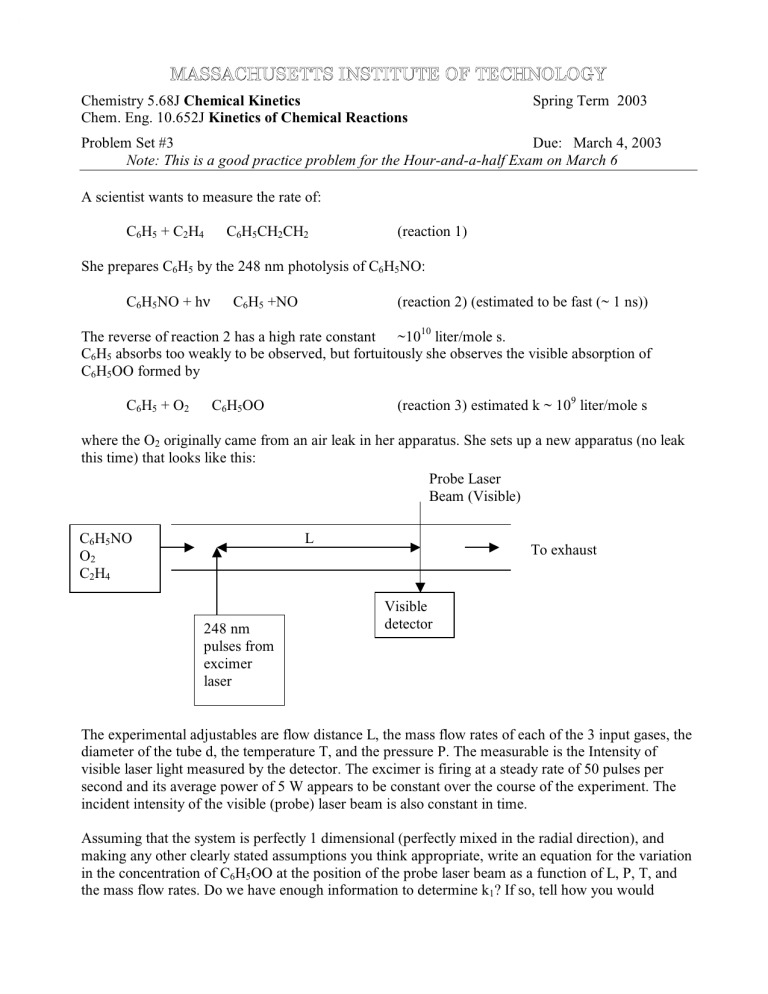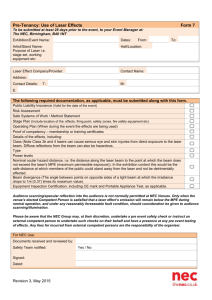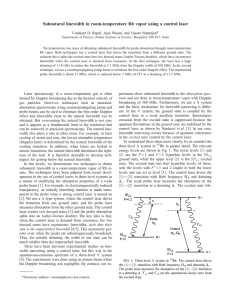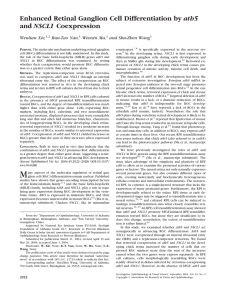Chemical Kinetics Spring Term 2003 Kinetics of Chemical Reactions Problem Set #3

Chemistry 5.68J Chemical Kinetics
Chem. Eng. 10.652J Kinetics of Chemical Reactions
Spring Term 2003
Problem Set #3 Due: March 4, 2003
Note: This is a good practice problem for the Hour-and-a-half Exam on March 6
A scientist wants to measure the rate of:
C
6
H
5
+ C
2
H
4
C
6
H
5
CH
2
CH
2
(reaction 1)
She prepares C
6
H
5 by the 248 nm photolysis of C
6
H
5
NO:
C
6
H
5
NO + h
ν
C
6
H
5
+NO (reaction 2) (estimated to be fast (~ 1 ns))
The reverse of reaction 2 has a high rate constant ~10
10 liter/mole s.
C
6
H
5 absorbs too weakly to be observed, but fortuitously she observes the visible absorption of
C
6
H
5
OO formed by
C
6
H
5
+ O
2
C
6
H
5
OO (reaction 3) estimated k ~ 10
9 liter/mole s where the O
2 originally came from an air leak in her apparatus. She sets up a new apparatus (no leak this time) that looks like this:
Probe Laser
Beam (Visible)
L C
6
H
5
NO
O
2
C
2
H
4
To exhaust
Visible detector
248 nm pulses from excimer laser
The experimental adjustables are flow distance L, the mass flow rates of each of the 3 input gases, the diameter of the tube d, the temperature T, and the pressure P. The measurable is the Intensity of visible laser light measured by the detector. The excimer is firing at a steady rate of 50 pulses per second and its average power of 5 W appears to be constant over the course of the experiment. The incident intensity of the visible (probe) laser beam is also constant in time.
Assuming that the system is perfectly 1 dimensional (perfectly mixed in the radial direction), and making any other clearly stated assumptions you think appropriate, write an equation for the variation in the concentration of C
6
H
5
OO at the position of the probe laser beam as a function of L, P, T, and the mass flow rates. Do we have enough information to determine k
1
? If so, tell how you would
determine it from the data you have. If not, tell what additional data you need. How would you carry out the experiments?









